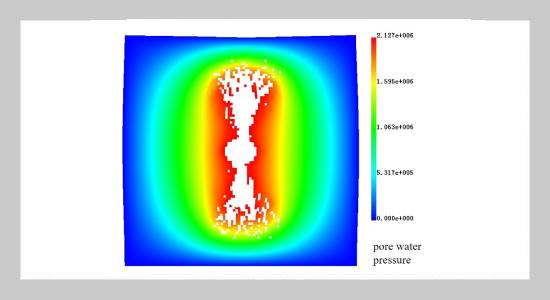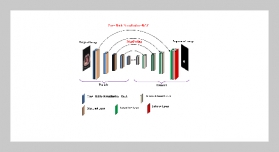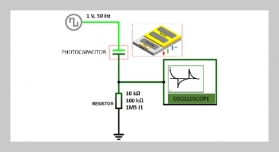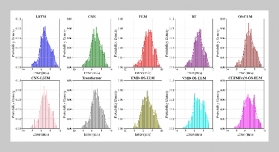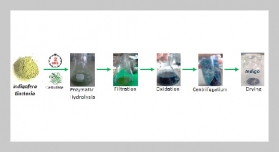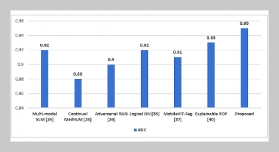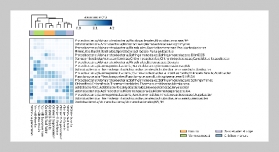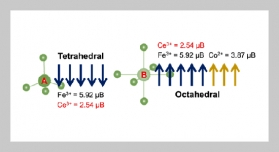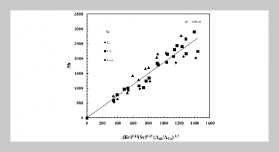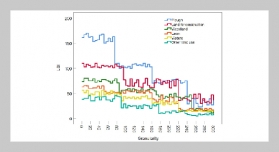- [1] Y. Qian, Z. Xu, Y. Qin, and X. Gou, (2025) “A critical review on the multidimensional complexity of sustainable energy development" Applied Energy 394: 126194. DOI: 10.1016/j.apenergy.2025.126194.
- [2] F. Zhang, H. Wan, B. Liu, M. Zhu, X. Lv, and X. Xu, (2025) “Numerical Simulation on the Influence of Natural Fractures on Hydraulic Fracture Propagation in Fractured Coal Reservoirs" Energy & Fuels 39(4): 1938 1958. DOI: 10.1021/acs.energyfuels.4c05177.
- [3] W. Zhang, H. Zhao, Z. Liu, H. Shi, and T. Wang, (2025) “Fracture propagation characteristics and energy evolution law of deep coal seam containing gangue based on discrete lattice method" Physics of Fluids 37(1): DOI: 10.1063/5.0252523.
- [4] J. Ma, X. Li, Y. Li, X. Wang, Q. Yao, andS.Yang, (2025) “Numerical simulation of hydraulic fracture extension pat terns at interfaces of coal-measure rock strata and a new theoretical prediction model" Simulation Modelling Practice and Theory 140: 103063. DOI: 10.1016/j.simpat.2024.103063.
- [5] F. Gong, G. Zou, Z. Zhang, S. Peng, G. Wang, and H. Chen, (2024) “An anisotropic rock physics modeling for the coalbed methane reservoirs and its applications in anisotropy parameter prediction" Journal of Applied Geophysics 225: 105381. DOI: 10.1016/j.jappgeo.2024.105381.
- [6] Q. Ren, C. Zhang, G. Wu, H. Zhang, S. Gao, Z. Sun, and Y. Gao, (2024) “Hydraulic fracture initiation and propagation in deep coalbed methane reservoirs considering weak plane: CT scan testing" Gas Science and Engineering 125: 205286. DOI: 10.1016/j.jgsce.2024.205286.
- [7] S. Zuo, C. Wang, J. Si, L. Zhang, F. Tian, S. Peng, and Z. Li, (2024) “The effect of temperature and ultrasonic power on the microstructure evolution of coal modified by clean fracturing fluid: An experimental study" Energy 306: 132436. DOI: 10.1016/j.energy.2024.132436.
- [8] Z. Zhou, M. Sheng, Z. Ge, S. Gong, Q. Huai, J. Mou, and F. Wang, (2024) “Permeability Evolution of Bituminous Coal Fractures during the Shear Slip Process" Energy & Fuels 38(17): 16189–16201. DOI: 10.1021/acs.energyfuels.4c01495.
- [9] X. Wang, J. Pan, Y. Jin, X. Du, Z. Wang, N. Cheng, and Q. Hou, (2025) “Morphology and propagation of super critical carbon dioxide-induced fractures in coal based on a non-destructive surface extraction method" Fuel 384: 133948. DOI: 10.1016/j.fuel.2024.133948.
- [10] P. Guo, X. Tang, L. Wen, B. Wu, F. Luo, and Y. Liu, (2024) “Geological characteristics and coalbed methane adsorbability of shallow coal rock in Qinshui Basin, China" Journal of Petroleum Exploration and Production Technology 14(11): 2901–2912. DOI: 10.1007/s13202-024-01869-6.
- [11] C. Guo, Q. Feng, T. Ma, S. Wang, R. Zhou, and B. Wang, (2021) “Coupled flow-geomechanics studies on the role of hydrofracturing and secondary fracturing in CO2-enhanced coalbed methane" Energy Explo ration & Exploitation 39(5): 1622–1639. DOI: 10.1177/ 0144598720985278.
- [12] S. Tripoppoom, X. Wang, Z. Liu, W. Yu, H. Xie, K. Sepehrnoori, and J. Miao, (2020) “Characterizing hy draulic and natural fractures properties in shale oil well in Permian basin using assisted history matching" Fuel 275: 117950. DOI: 10.1016/j.fuel.2020.117950.
- [13] Q. Zhang, Y. Li, Z. Li, Y. Yao, F. Du, Z. Wang, Z. Tang, W. Zhang, and S. Wang, (2024) “Fracture Propagation Laws and Influencing Factors in Coal Reservoirs of the Baode Block, Ordos Basin" Energies 17(23): 6183. DOI: 10.3390/en17236183.
- [14] S. Huang, D. Liu, Y. Cai, and Q. Gan, (2019) “In situ stress distribution and its impact on CBM reservoir properties in the Zhengzhuang area, southern Qinshui Basin, North China" Journal of Natural Gas Science and Engineering 61: 83–96. DOI: 10.1016/j.jngse.2018.11.005.
- [15] Y. Yang, X. Li, X. Yang, and X. Li, (2022) “Influence of reservoirs/interlayers thickness on hydraulic fracture propagation laws in low-permeability layered rocks" Journal of Petroleum Science and Engineering 219: 111081. DOI: 10.1016/j.petrol.2022.111081.
- [16] F. Yan, B. Lin, C. Zhu, C. Shen, Q. Zou, C. Guo, and T. Liu, (2015) “A novel ECBM extraction technology based on the integration of hydraulic slotting and hydraulic fracturing" Journal of Natural Gas Science and Engineering 22: 571–579. DOI: 10.1016/j.jngse.2015.01.008.
- [17] Q. Liu, Y. Cheng, H. Zhou, P. Guo, F. An, and H. Chen, (2015) “A mathematical model of coupled gas flow and coal deformation with gas diffusion and Klinkenberg effects" Rock MechanicsandRockEngineering48(3): 1163–1180. DOI: 10.1007/s00603-014-0594-9.
- [18] S. Huang, Y. Lu, Z. Ge, Z. Zhou, Y. Guan, and X. Chen, (2023) “Fracture mechanism of coal seams induced by a multibranched borehole drilling (MBBD) technique to enhance coalbed methane (CBM) extraction" Energy & Fuels 37(17): 13034–13047. DOI: 10.1021/acs.energyfuels.3c02077.
- [19] J. Ma, X. Li, Q. Yao, and K. Tan, (2023) “Numerical simulation of hydraulic fracture extension patterns at the interface of coal-measure composite rock mass with Cohesive Zone Model" Journal of Cleaner Production 426: 139001. DOI: 10.1016/j.jclepro.2023.139001.
- [20] F. Zhang, H. Wan, Y. Liu, S. Li, and Z. Li, (2022) “Mechanism and Numerical Simulation of Vertical Frac ture Propagation in Composite Coal Rock" Shock and Vibration 2022(1): 3044121. DOI: 10.1155/2022/ 3044121.
- [21] S. Tang, S. Liu, D. Tang, S. Tao, A. Zhang, Y. Pu, and T. Zhang, (2021) “Occurrence of fluids in high dip angled coal measures: Geological and geochemical assessments for southern Junggar Basin, China" Journal of Natural Gas Science and Engineering 88: 103827. DOI: 10.1016/j.jngse.2021.103827.
- [22] Y. Sun, J. Zuo, M. Karakus, L. Liu, H. Zhou, and M. Yu, (2021) “A new theoretical method to predict strata movement and surface subsidence due to inclined coal seam mining" Rock Mechanics and Rock Engineer ing 54(6): 2723–2740. DOI: 10.1007/s00603-021-02424-z.
